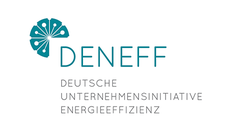Search eceee proceedings
Non-energy benefits of heat integration retrofits – case study at a large oil refinery in Sweden
Panel: 3. Energy management: The nuts and bolts
Authors:
Sofie Marton, Chalmers University of Technology, Sweden
Elin Svensson, CIT Industriell Energi AB, Sweden
Simon Harvey, Chalmers University of Technology, Sweden
Abstract
Heat recovery through heat integration is one important option for increased energy efficiency in chemical process industry. In this type of industry, there are usually large potentials to reduce heat consumption by better utilizing heat excess at high temperatures to cover heat demands at lower temperatures. Techno-economic evaluation of heat recovery projects based on estimated energy cost savings and investment costs for standard heat exchanger equipment often shows that a large share of the potential is economically viable. However, evaluation of the potential for cost-effective implementation of heat integration retrofits requires a wider perspective. The techno-economic heat-savings potential can be limited by practical implementation and operability issues, sometimes significantly more important for the decision than the fuel cost savings and the cost of the standard heat exchanger equipment for the suggested heat recovery. However, the techno-economic potential can also be enhanced by non-energy benefits. To investigate how different factors affect the techno-economic potential for implementation of heat integration projects, an interview study has been conducted at a large oil refinery in Sweden. For the refinery, nine heat exchanger network retrofits were designed for different production units of the refinery. These retrofit proposals were discussed in interviews with operations, process, energy and control engineers responsible for the respective unit. The interviews revealed several non-energy benefits to be of great importance when the different retrofit proposals were evaluated. The presentation will present the non-energy benefits of the heat integration retrofits identified in the interview study and discuss their potential influence for decisions about energy efficiency investment in chemical processing companies. Examples of non-energy benefits that were stated as important were de-bottlenecking, decreased pressure drop and decreased fouling.
Downloads
Download this presentation as pdf: 3-063-18_Marton_pres.pdf















